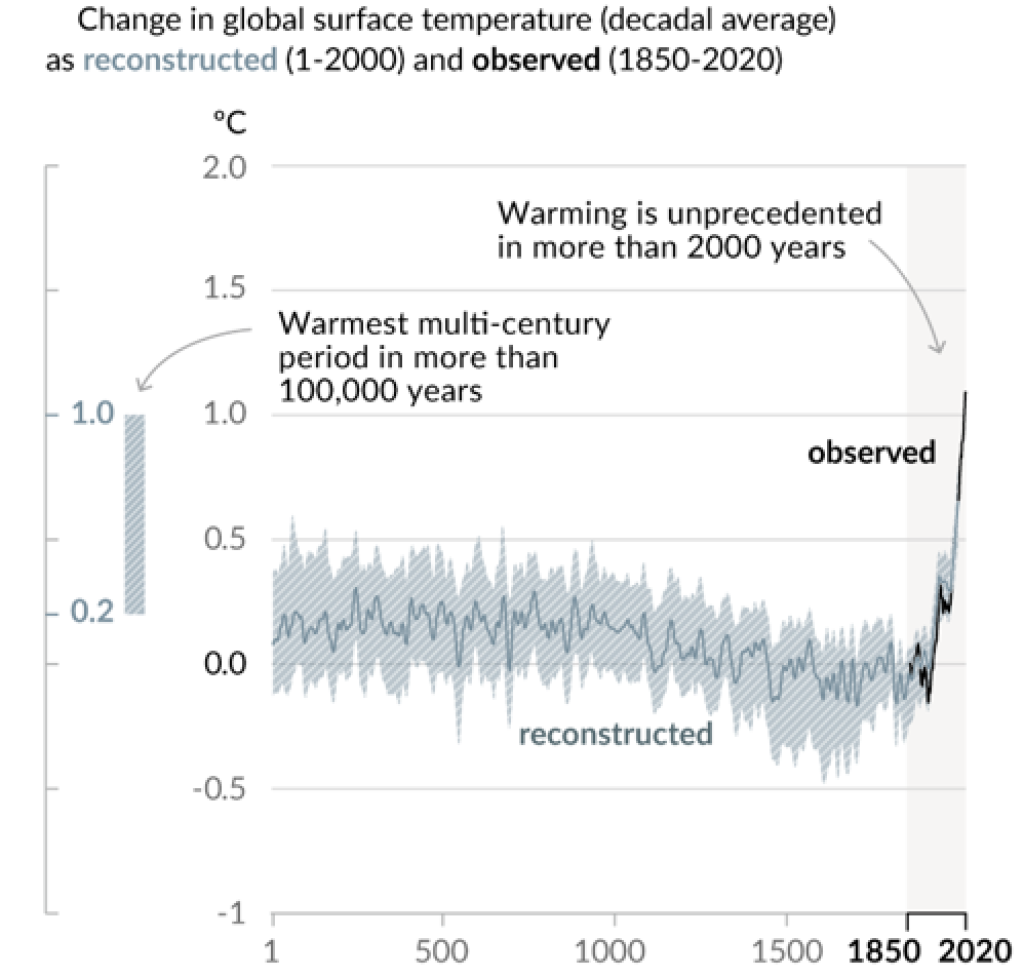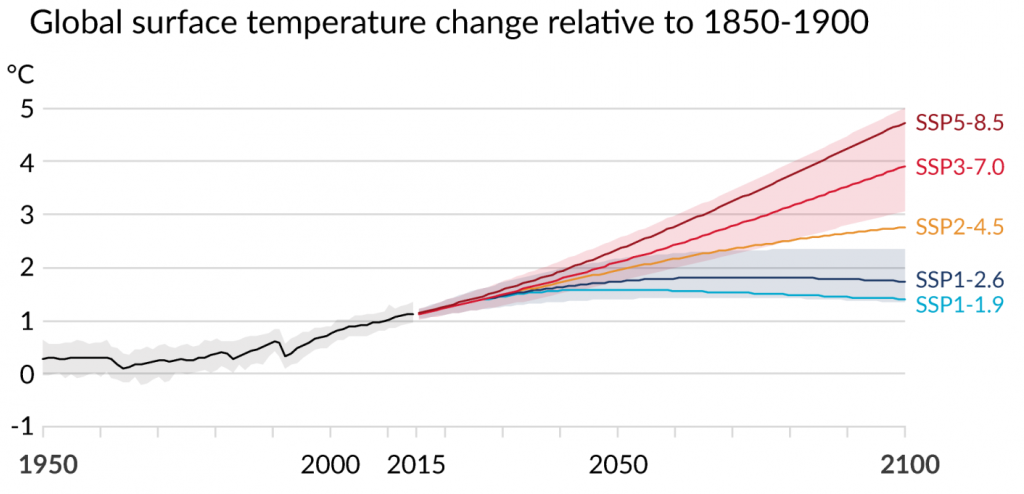A small window of opportunity to keep our planet liveable
Roshanka Ranasinghe, Senior Specialist Deltares and IHE Delft’s Professor of Climate Change Impacts & Coastal Risk, contributed to the latest assessment report of the Intergovernmental Panel on Climate Change (IPCC), which was released earlier this month. He explains here why the world needs to act NOW to adapt and to avoid runaway climatic change.

The Working Group (WGI) contribution to the Sixth Assessment Report (AR6) of the Intergovernmental Panel on Climate Change (IPCC), concentrating on the physical science basis of climate change was released about a week ago, following three and half years of intense work by 234 scientists from 65 countries. It has been 8 years since the last IPCC assessment report (AR5), and as AR6 shows, our knowledge on climate change has improved tremendously in this 8-year period, owing largely to more studies, better models and more data.
For this report, we assessed 14,000 publications and went through two cycles of expert review and a final government review, drawing more than 78,000 review comments, and addressed every single one of them. The amazingly positive response to the report from all corners of the world bears ample testimony to the level of rigour of this assessment, in all probability the last IPCC assessment before the world crosses the 1.5°C global warming threshold set by the COP 21 Paris agreement in 2015.
My main role in AR6 WGI was as Coordinating Lead Author in Chapter 12 (Climate change information for regional impact and for risk assessment) of the report. Apart from this, I was also a lead author in the Summary for Policy Makers, the Technical Summary, and was a contributing author in Chapters 9, 11 and Atlas of the WGI report.
From Deltares, others also contributed to this WGI report; Bart van den Hurk, Senior Specialist at Deltares and Professor at Vrije Universiteit, is lead author of the Atlas chapter and the Technical Summary, and contributing author in the Summary for Policy Makers, and Chapters 11 and 12; and Johan Reyns, Senior advisor Deltares and Lecturer/Researcher at IHE Delft is contributing author in Chapters 11, 12 and Atlas. The entire report can be found here.
So, what is new in this report compared to the former assessment report 8 years ago? There are many key differences, which I will attempt to summarise below. All figures shown here are from the AR6 WGI Summary for Policy Makers or the underlying chapters.
The past
Recent changes in the climate are unprecedented in thousands of years, and are intensifying:
- Global warming since 1850 has been unprecedented in at least the last 2000 years. The world is now 1.1°C warmer, compared to 1850-1900;
- The current level of CO2 concentration in the atmosphere is the highest it has been in at least 2 million years;
- The rate of global mean sea level rise is the fastest it has been for at least 3000 years;
- Summer Arctic sea ice area is currently at its lowest in at least 1000 years;
- Current glacier retreat is unprecedented for at least 2000 years.

AR6 makes a giant step forward from AR5 in terms of attributing climate change to human activities. AR5 concluded that “it is extremely likely that human influence has been the dominant cause of the observed warming since the mid-20th century”. Aided by the rapid advances made over the last few years in climate attribution science, AR6 concludes that “it is unequivocal that human influence has warmed the atmosphere, ocean and land”. This now a statement of fact. There is no longer any doubt.
The future
The global warming level of 1.5°C (relative to 1850-1900) is projected to be exceeded in the next 20 years, under all emission scenarios considered in this assessment. Furthermore, 2°C of warming is projected to be reached during the 21st century for all but the two lowest emission scenarios considered.

However, with deep cuts in greenhouse gas emissions, it is still possible to bring down global warming to just below 1.5°C by the end of the century. But, unless there are immediate, and large-scale reductions in greenhouse gas emissions, limiting warming to 1.5°C will be soon beyond our reach.
By 2100, global mean sea level is projected to rise respectively by up to 0.55 m and 1.01 (relative to 1995-2014), under the lowest and highest emission scenarios considered in this assessment. A low-likelihood, high impact global mean sea level rise approaching 2 m cannot however be ruled out due to the deeply uncertain ice sheet processes. For the first time in IPCC assessments, this report also provides sea level rise projections at 2300.
Regional assessment
One of the main advances in AR6, compared to previous assessment reports, is its regional scale assessment of climate change (in Chapters 10, 11, 12 and Atlas), which is done at an unprecedented level of granularity, employing changes in 33 individual climatic impact-drivers (CIDs) across 44 sub regions of the world. CID is a new term introduced in AR6 and is defined as “physical climate system conditions (e.g., means, events, extremes) that affect an element of society or ecosystems.
Depending on system tolerance, CIDs and their changes can be detrimental, beneficial, neutral, or a mixture of each across interacting system elements and regions. CID types include heat and cold, wet and dry, wind, snow and ice, coastal and open ocean.”

The regional assessment in AR6 WG I shows that:
Climate change is already affecting every region on Earth, in multiple ways.
Extreme climate events, including heat waves, heavy rainfall, and droughts, have become more frequent and severe over the last few decades, and these changes are clearly linked to human activities;
There’s no going back from some changes in the climate system (e.g. changes in the ocean, ice sheets, and sea level). However, some changes could be slowed and others could be stopped by limiting warming.
With further global warming, every region of the world is projected to increasingly experience concurrent and multiple changes in climatic impact-drivers. Changes in several climatic impact-drivers would be more widespread at 2°C compared to 1.5°C global warming and even more widespread and/or pronounced for higher warming levels.
By mid-century (just 29 years from now), when 2°C of warming will be reached under all but the lowest emission scenarios considered, there is high confidence that all heat and coastal climatic impact-drivers will increase, while cold climatic impact-drivers will decrease in a vast majority of the world’s regions. High confidence changes in other climatic impact-drivers are more region specific.

What can we do?
In AR6, we stress that it is not all doom and gloom. It is possible to limit global warming, yes. But to achieve this, strong, rapid, and sustained reductions in CO2, methane, and other greenhouse gases are necessary. This would not only reduce the consequences of climate change but also improve air quality.
Moreover, the widespread changes in climatic impact-drivers projected for many regions of the world, points to the urgent need for adaptation within the next two decades (and beyond), regardless of mitigation efforts – the effects of which could take years to decades to be felt.
The climate we will experience and our well-being, depends on the decisions we make now. The choices we make in the next few years will decide how liveable our planet will be in future.

